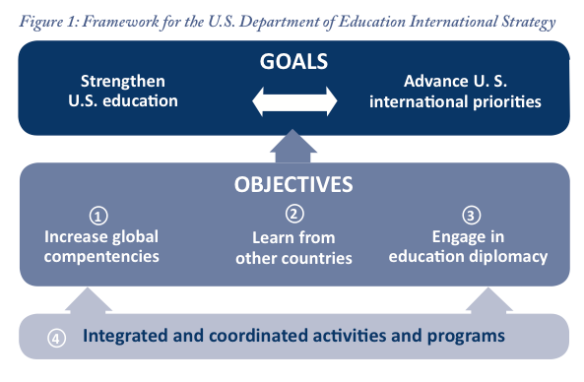Digital Promise’s Karen Cator concludes her thoughtful LinkedIn post, “Education is Having Its Internet Moment,” with the question, “Are we ready?” The fair answer for education systems worldwide is, “no, but we are working on it,” and that is one of the purposes of this October’s Connected Educators Month. Since the publication of the National Educational Technology Plan by Cator’s team at the Office of Education Technology at the U.S. Department of Education in 2010, connected education has gained prominence and advocates across all levels of education. In the past few months, the practice of “anytime, anywhere” teaching and learning has accelerated. More than just having its Internet moment, education is having its “connected moment.”
As U.S. Secretary of Education Arne Duncan — expanding upon Malala Yousafzai’s UN speech — made clear in August at the USAID Education Summit, “If we want both justice and peace, then we must work for education.” Secretary Duncan’s speech, arguably the best speech of his term in office, laid out an inspiring vision of what education can accomplish. A few days later, Mark Zuckerberg unveiled his vision to connect everyone to the Internet. These visions recognize connected teaching and learning as a powerful and effective development strategy, especially for marginalized urban and rural youth, youth with special needs, and women and girls.
Our country is not ready for Secretary Duncan’s or Mark Zuckerberg’s vision, but the Connect All Schools Consortium and others are working toward the goal of meaningful connected education for youth worldwide. New platforms and social media channels are connecting teachers and students worldwide in creative ways at increasingly huge numbers. We still need much more investment in our country’s international exchange programs, global awareness curriculum developers, and cross-cultural professional development providers. Disappointingly, Federal funding for international training and education has been cut by 41% in the past four years. While private sector investment in education’s connected moment is crucial, this investment is much more effective when leveraged with local, state, and Federal government investment. If we want justice and peace, we need connected education to be funded as a top national security issue.
Connected education also needs to be represented in the Common Core State Standards. The Common Core have no mention of learning about the world (global competencies), interacting with the world (global collaboration), or working with peers to address justice and peace (global citizenship). While the Common Core are not curricula, the Standards do reflect what we think are important for our next generation to learn; In short, our values. As standards, the Common Core are adequate, but as a roadmap for what American education can contribute to justice and peace, the Common Core come up short.
The good news is that 9 out of 10 students want more world affairs, foreign language, and international education in their classrooms. These students know future employment and tackling global issues like climate change, require global competencies, language skills, and connections with peers abroad. These students want to make the world a safer, more prosperous, and more hopeful place. Let’s follow their lead, connect, and embrace this transformational moment in education together.

